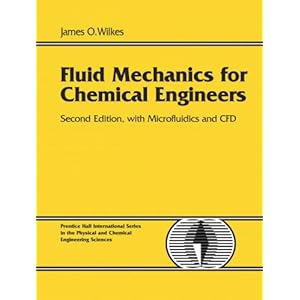
Publication Date: October 9, 2005 | ISBN-10: 0,131,482,122 ISBN-13 :978-0,131,482,128 Edition: 2
Practical Guide to Contemporary Fluid Mechanics for Chemical Engineers
Since most chemical processing applications for some or all of the fluid-phase fluid dynamics, chemical engineers need to have a deep understanding. This knowledge is a particularly valuable biochemical, chemical, energy, fermentation, materials, mining, petroleum, pharmaceuticals, polymer, and waste treatment industry.
The fluid mechanics of Chemical Engineers, Second Edition, Microfluidics and CFD, systematically introduces fluid dynamics and chemical engineer’s point of view, must be aware of the actual physical behavior and solve real-world problems. Win outstanding academic title of “select” Monthly Award, based on the first version, this version has been fully updated to reflect the latest progress of the field.
The second edition contains a lot of new microfluidics and computational fluid dynamics coverage, to show the CFD through detailed examples use FlowLab and the COMSOL Multiphysics. This chapter, the turbulence has been extensively revised to address the more complex and realistic challenges, including turbulent mixing and circulation.
The first part provides a clear, concise and easy to follow introduction to macroscopic fluid mechanics, including the basic principles of basic physical properties, hydrostatics, mass, energy and momentum rate law and flow through the pumps, piping, and other equipment . The second part of the steering microscopic fluid mechanics, including
Differential equations of hydrodynamics
Viscous flow problems, some of which include polymer processing
Laplace’s equation, irrotational, porous media flow
Almost one-way traffic from the boundary layer lubrication, calendering, and thin film applications
Turbulent flow, showing k / ε method extends the traditional mixing-length theory
The movement of the bubble, the two-phase flow, and fluidization
Non-Newtonian fluids, including inelastic and viscoelastic fluids
The influence of the micro-flow of the fluid, including electroosmosis, electrophoresis, streaming potential, and the electric switch
Computational Fluid Dynamics and FlowLab COMSOL Multiphysics
Fluid mechanics chemical engineers, second edition, Microfluidics and CFD, including 83 fully working practical examples, including several involving FlowLab COMSOL Multiphysics. Also the complexity of the 330-chapter problems, including some of the universities, the University of Cambridge chemical engineering examinations. The author covers the fluid dynamics of all the materials needed some professional engineers exam.
The author’s website, www.engin.umich.edu/ the ~ fmche / separate chapters, problem-solving skills, errata, and provide additional comments.
Show more

